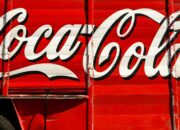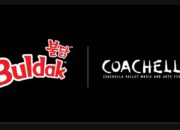Uzone.id – The landscape of content marketing is rapidly evolving as we progress into 2024. To stay competitive, businesses must stay ahead of the curve due to innovation, shifting consumer behaviors, and the constantly changing digital ecosystem.
In this article, marketers will find the latest trends and predictions for content marketing in 2024, as well as insights from industry experts and data-driven analysis to aid in their journey through this dynamic field.
1. AI-Powered Content Creation and Optimization
Artificial intelligence (AI) has made significant strides in recent years, and its impact on content marketing is profound. AI-powered tools are now capable of generating high-quality content, optimizing it for search engines, and personalizing it for individual users.
AI in Content Creation
AI-driven content creation tools like GPT-4 are revolutionizing how marketers produce content. These tools can generate blog posts, social media updates, and even video scripts with minimal human intervention. According to a report by Gartner, “By 2024, 50% of marketing content will be generated by AI”. This shift allows marketers to produce content at scale while maintaining quality.
Personalized Content with AI

Personalization is no longer a luxury; it’s a necessity. AI algorithms analyze user data to deliver personalized content experiences, enhancing engagement and conversion rates.
Digital marketing influencer Jeff Bullas, mentioned, “personalized content is the key to building meaningful connections with your audience. AI makes it possible to tailor content to individual preferences and behaviors”.
2. Video Content Dominance
Video content continues to dominate the digital landscape, with platforms like YouTube, TikTok, and Instagram Reels leading the way. In 2024, video content is expected to account for 82% of all internet traffic, according to Cisco’s Visual Networking Index.
Short-Form Videos
Short-form videos have gained immense popularity, specifically among younger audiences. Platforms like TikTok and Instagram Reels have set the trend, encouraging brands to create engaging, bite-sized video content.
“Short-form videos are effective because they capture attention quickly and deliver the message in a concise manner,” stated Neil Patel, a leading digital marketing expert.
Live Streaming
Live streaming is another significant trend, offering real-time engagement opportunities. Brands use live streaming for product launches, behind-the-scenes content, and interactive Q&A sessions. According to a survey by Livestream, 80% of consumers prefer watching live videos from brands to reading blog posts.
3. Voice Search Optimization
The rise of voice-activated assistants like Alexa, Siri, and Google Assistant has transformed how users search for information. Voice search is becoming increasingly popular, and optimizing content for voice search is crucial for staying relevant.
Conversational Content
Voice searches are typically more conversational than text searches. Content should be optimized to match the natural language and question-based queries users might ask. According to a study by Adobe, “Voice search will account for 50% of all searches by 2024”.
Local SEO and Voice Search
Local businesses can particularly benefit from voice search optimization. Voice queries often include phrases like “near me” or “closest to me,” making local SEO more important than ever. Greg Sterling, VP of Market Insights at Uberall, stated, “local SEO combined with voice search optimization can significantly increase visibility for local businesses”.
4. The Role of Augmented Reality (AR) and Virtual Reality (VR)
AR and VR technologies are making their way into content marketing, providing immersive experiences that engage users in new and exciting ways.
AR in Content Marketing
AR allows brands to create interactive experiences by overlaying digital information onto the real world. For instance, beauty brands use AR to let users virtually try on makeup, while furniture companies allow customers to visualize products in their homes.
“AR has the potential to transform how consumers interact with brands by offering personalized and immersive experiences,” claimed Chief Analyst at ARtillery Intelligence, Michael Boland.
VR Storytelling
VR takes storytelling to a whole new level, enabling brands to create fully immersive environments. From virtual tours to interactive brand experiences, VR gives endless possibilities for content marketers.
According to a report by Statista, the global VR market is expected to reach USD44.7 billion by 2024.
5. Data-Driven Content Strategies
In 2024, data-driven content strategies are more important than ever. With access to vast amounts of data, marketers can make informed decisions to optimize their content for better performance.
Analytics and Insights
Advanced analytics tools provide deep insights into content performance, audience behavior, and engagement metrics. Marketers can use this data to refine their content strategies, ensuring they deliver the right message to the right audience at the right time.
As highlighted by Ann Handley, Chief Content Officer at MarketingProfs, “data-driven content marketing allows for more precise targeting and improved ROI.”
Predictive Analytics
Predictive analytics uses historical data and machine learning algorithms to forecast future trends and behaviors. This technology helps marketers anticipate audience needs and preferences, enabling proactive content creation.
Based on the report of Forrester Research, predictive analytics will be a game-changer for content marketing, allowing brands to stay ahead of trends and deliver timely content.
6. Ethical and Inclusive Content
Consumers are increasingly concerned with ethical and inclusive practices. Brands that prioritize these values in their content marketing efforts are more likely to build trust and loyalty among their audience.
Diversity and Inclusion
Inclusive content reflects diverse perspectives and experiences, resonating with a broader audience. Brands should strive to represent different cultures, genders, and backgrounds in their content.
Former COO of Meta, Sheryl Sandberg once claimed, “diverse teams create better products, and the same principle applies to content marketing. Inclusive content resonates more deeply with a diverse audience.”
Ethical Marketing Practices
Transparency and authenticity are vital in today’s marketing landscape. Consumers expect brands to be honest about their products and practices.
“Ethical marketing isn’t just a trend; it’s a fundamental shift towards more transparent and honest business practices,” described renowned marketing author, Seth Godin.
In other words, ethical marketing is valuable for credibility and fosters long-term relationships with customers.
7. Content Experiences and Interactive Content
The popularity of interactive content and immersive experiences is on the rise, providing users with a more engaging and participatory experience.
Interactive Content
Types of Interactive content includes quizzes, polls, calculators, and interactive infographics not only captures attention, but also encourages users to spend more time engaging with the brand.
HubSpot reported that interactive content generated twice as many conversions as passive content.
Immersive Content Experiences
Based on CMI’s report, immersive content experiences were able to significantly boost engagement and brand recall.
Immersive content experiences usually use a combination of media types—text, video, audio, and interactive elements—to create a cohesive and engaging narrative. These experiences captivate users, making them more likely to remember and share the content.
8. Sustainable Content Practices
Sustainability is not only a social responsibility but also a marketing advantage. Brands that adopt sustainable content practices demonstrate their commitment to environmental and social issues, resonating with conscious consumers.
Sustainable Content Creation
Sustainable content creation involves using eco-friendly practices, such as reducing paper use, minimizing carbon footprint through digital content, and promoting sustainability in content themes. As highlighted by Tom Szaky, CEO of TerraCycle, “Sustainability should be integrated into every aspect of content marketing, from production to distribution”.
Green Marketing
According to Nielsen, brands with sustainable practices see a significant increase in consumer loyalty and trust. Green marketing is believed to focus on promoting products and practices that are environmentally friendly. Content that highlights a brand’s sustainability efforts can attract eco-conscious consumers and enhance brand reputation.
Conclusion
The future of content marketing in 2024 will be influenced by technological advances, changing consumer expectations, and a higher emphasis on ethical and sustainable practices. AI-powered content creation, video dominance, voice search optimization, and immersive experiences are set to redefine how brands engage with their audiences. Data-driven strategies, inclusive content, and ethical marketing will play a crucial role in building trust and loyalty.
As the content marketing landscape continues to evolve, staying informed about these trends and adapting to new technologies and consumer behaviors will be essential for success. By embracing these changes and prioritizing quality, authenticity, and innovation, brands can navigate the future of content marketing effectively. (Eno)
















